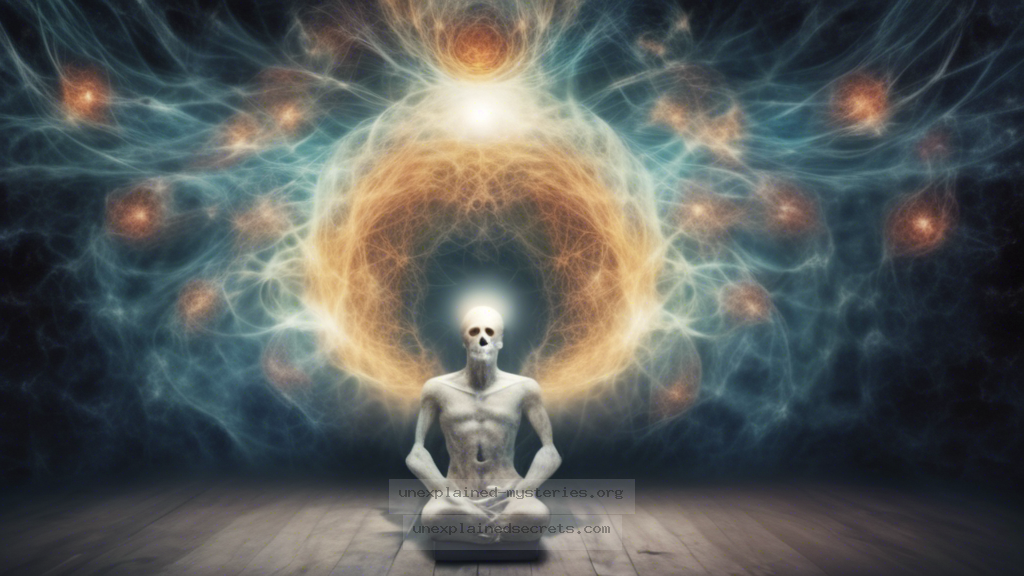What Happens to Consciousness After Clinical Death? Exploring the Mystery of Near-Death Experiences
What Happens to Consciousness After Clinical Death? Exploring the Mystery of Near-Death Experiences
The phenomenon of Near-Death Experiences (NDEs) has intrigued researchers, psychologists, and the general public for decades. What happens to our consciousness when we face death? Are these experiences merely physiological reactions to trauma, or do they hint at something beyond our current understanding of life and death? This question not only challenges our scientific paradigms but also touches on philosophical and spiritual realms. As we delve into the depths of this mystery, we will explore the narratives of those who have experienced NDEs, the scientific inquiries that have been made, and the implications of these findings on our understanding of consciousness.
The Historical Context of Near-Death Experiences
Near-Death Experiences have been documented throughout history, with accounts found in ancient texts, religious scriptures, and folklore. One of the earliest recorded instances comes from the writings of Plato, who described a soldier’s experience of death and rebirth in “The Republic.” However, modern interest in NDEs surged in the 20th century, particularly after Dr. Raymond Moody published “Life After Life” in 1975. Moody’s work popularized the term ‘near-death experience’ and outlined common features such as feelings of peace, out-of-body experiences, and encounters with deceased loved ones.
In the decades that followed, researchers began to collect data on NDEs systematically. Notable studies, including those conducted by Dr. Pim van Lommel and Dr. Sam Parnia, sought to understand the physiological and psychological underpinnings of these experiences. Their findings have sparked debates about the nature of consciousness and whether it exists independently of the brain.
Core Concepts and Theories Surrounding NDEs
At the heart of the NDE phenomenon is the question of consciousness. What is it, and can it exist independently of the physical body? Various theories have emerged to explain NDEs, ranging from psychological interpretations to spiritual explanations. Here are some prominent theories:
- Physiological Response: Some researchers argue that NDEs are the result of brain activity during traumatic events. Neurochemical reactions, such as the release of endorphins, may create feelings of euphoria and detachment.
- Psychological Processing: NDEs may be a coping mechanism for the brain, helping individuals process the trauma of death or severe illness.
- Transcendental Experience: Many who have experienced NDEs describe feelings of connection to a higher power or the universe. This perspective suggests that consciousness may exist beyond the physical realm.
Documented Cases of Near-Death Experiences
Real-world examples of NDEs provide compelling evidence for the phenomenon’s complexity. One notable case is that of Dr. Eben Alexander, a neurosurgeon who experienced a profound NDE while in a coma due to bacterial meningitis. In his book “Proof of Heaven,” he describes a journey to a realm of love and light, challenging the conventional understanding of consciousness and brain function.
Another significant case is that of Pam Reynolds, who underwent a surgical procedure for a brain aneurysm in 1991. During the surgery, she reported an out-of-body experience, describing in detail events that occurred while her brain showed no signs of activity. Reynolds’ account has been cited in numerous studies as evidence that consciousness can operate independently of the brain.
Scientific Research and Evidence
Research into NDEs has gained traction, with several studies aiming to understand the phenomena through empirical methods. A landmark study by Dr. Pim van Lommel in 2001 followed over 344 patients who had suffered cardiac arrest. The study revealed that about 18% of these patients reported NDEs, with consistent elements appearing across various accounts.
Additionally, the AWARE (AWAreness during REsuscitation) study, led by Dr. Sam Parnia, aimed to investigate the experiences of cardiac arrest patients. Preliminary findings suggest that individuals who have NDEs often recall vivid experiences with remarkable clarity, even when their brains were thought to be inactive. This raises intriguing questions about the nature of consciousness and its potential survival beyond physical death.
Practical Implications of NDE Research
The implications of NDE research extend beyond mere curiosity; they challenge our understanding of life, death, and consciousness. If consciousness can exist independently of the brain, what does this mean for our views on mortality? Many people who have had NDEs report a significant change in their life perspectives, often leading to increased spirituality, diminished fear of death, and a greater appreciation for life.
Insight: NDEs often lead individuals to adopt a more compassionate and purpose-driven life, emphasizing the importance of love and connection.
Alternative Perspectives on Consciousness and NDEs
While many researchers and individuals view NDEs as evidence of consciousness surviving death, alternative perspectives exist. Skeptics argue that NDEs can be explained through neurological and psychological phenomena. They point to factors such as oxygen deprivation, brain chemistry, and the brain’s ability to create vivid hallucinations during traumatic experiences.
Additionally, some argue that anecdotal evidence, while compelling, does not constitute scientific proof. Researchers emphasize the need for rigorous studies that can quantify and analyze NDEs in a controlled environment.
Common Misconceptions About NDEs
Despite growing interest in NDEs, several misconceptions persist. One common myth is that all NDEs are overwhelmingly positive experiences. While many are, some individuals report distressing or negative experiences, often termed “Dying Process Experiences.” These can involve feelings of fear, despair, or an encounter with malevolent entities.
Another misconception is that NDEs provide definitive proof of an afterlife. While they may suggest something beyond our current understanding, the experiences are subjective and open to interpretation. The debate surrounding NDEs reflects broader questions about life, death, and consciousness that remain unresolved.
Best Practices for Investigating NDEs
For those interested in studying NDEs, several best practices can enhance the quality of research. Firstly, interdisciplinary approaches that integrate neuroscience, psychology, and spirituality can provide a more holistic understanding of the phenomena. Secondly, qualitative studies that focus on personal narratives can offer insights into the subjective nature of NDEs. Finally, ethical considerations must be prioritized, ensuring that participants’ experiences are respected and valued.
Future Developments and Ongoing Research
The field of NDE research is evolving, with ongoing studies seeking to deepen our understanding of consciousness. Advances in neuroimaging and brain science may help illuminate the brain’s role during these experiences. Additionally, as more individuals share their NDE stories, a larger database of experiences can be compiled for analysis.
Warning: As interest in NDEs grows, it is essential to approach sensationalized claims with skepticism and rely on scientifically backed research to inform discussions about consciousness and the afterlife.
Conclusion: The Enigma of Consciousness Beyond Death
The question of what happens to consciousness after clinical death remains one of humanity’s greatest mysteries. Near-Death Experiences challenge our understanding of life, death, and the nature of consciousness itself. With documented cases that defy conventional explanations and ongoing scientific research, we are gradually piecing together the puzzle of NDEs. Whether these experiences signal a deeper reality or are merely the brain’s response to trauma, they evoke profound questions about our existence and what may lie beyond. As we continue to investigate this enigmatic phenomenon, we may find that the essence of consciousness transcends the boundaries we have constructed around life and death.
Other Articles
Recent Posts
- What Happened to Flight MH370? The Conspiracy Theories That Still Haunt Us
- What Secrets Lurk Within the Walls of the Infamous Trans-Allegheny Lunatic Asylum?
- What Evidence Supports the Existence of Bigfoot in the Pacific Northwest?
- What Happened to the Indus Valley Civilization? Unraveling the Mysteries of Ancient Urban Life
- Can Telepathy Be Scientifically Proven Through Laboratory Evidence?







